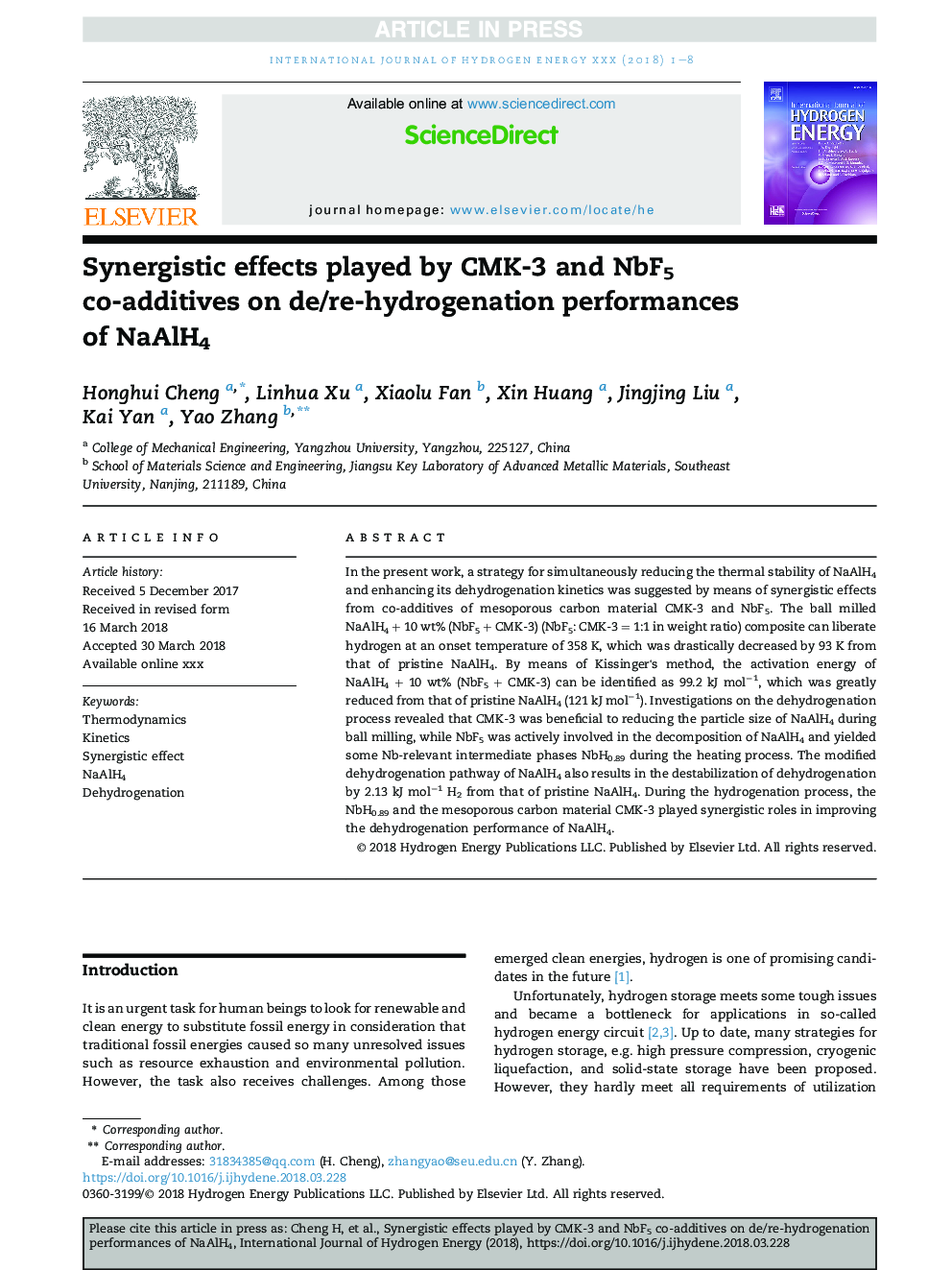| Article ID | Journal | Published Year | Pages | File Type |
|---|---|---|---|---|
| 7706100 | International Journal of Hydrogen Energy | 2018 | 8 Pages |
Abstract
In the present work, a strategy for simultaneously reducing the thermal stability of NaAlH4 and enhancing its dehydrogenation kinetics was suggested by means of synergistic effects from co-additives of mesoporous carbon material CMK-3 and NbF5. The ball milled NaAlH4Â +Â 10Â wt% (NbF5Â +Â CMK-3) (NbF5: CMK-3Â =Â 1:1 in weight ratio) composite can liberate hydrogen at an onset temperature of 358Â K, which was drastically decreased by 93Â K from that of pristine NaAlH4. By means of Kissinger's method, the activation energy of NaAlH4Â +Â 10Â wt% (NbF5Â +Â CMK-3) can be identified as 99.2Â kJÂ molâ1, which was greatly reduced from that of pristine NaAlH4 (121Â kJÂ molâ1). Investigations on the dehydrogenation process revealed that CMK-3 was beneficial to reducing the particle size of NaAlH4 during ball milling, while NbF5 was actively involved in the decomposition of NaAlH4 and yielded some Nb-relevant intermediate phases NbH0.89 during the heating process. The modified dehydrogenation pathway of NaAlH4 also results in the destabilization of dehydrogenation by 2.13Â kJÂ molâ1 H2 from that of pristine NaAlH4. During the hydrogenation process, the NbH0.89 and the mesoporous carbon material CMK-3 played synergistic roles in improving the dehydrogenation performance of NaAlH4.
Related Topics
Physical Sciences and Engineering
Chemistry
Electrochemistry
Authors
Honghui Cheng, Linhua Xu, Xiaolu Fan, Xin Huang, Jingjing Liu, Kai Yan, Yao Zhang,
